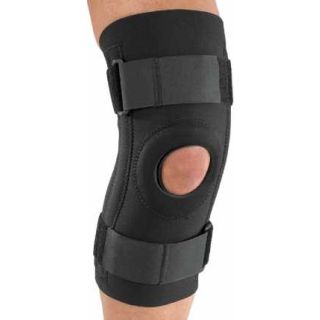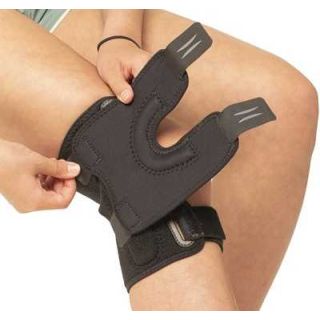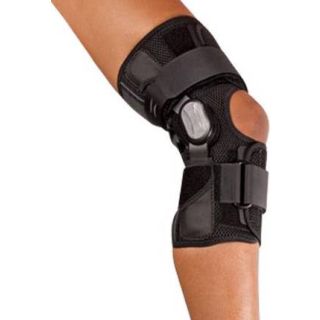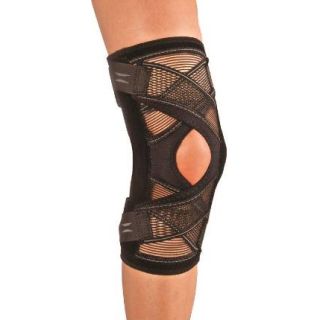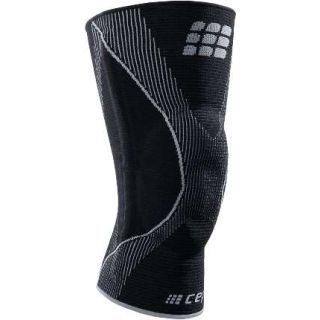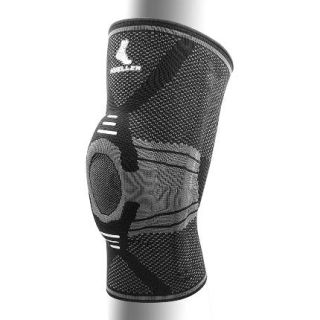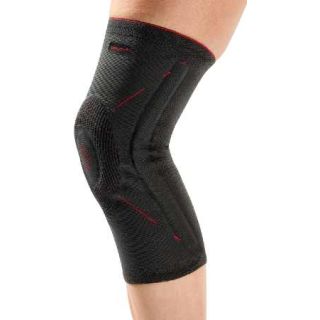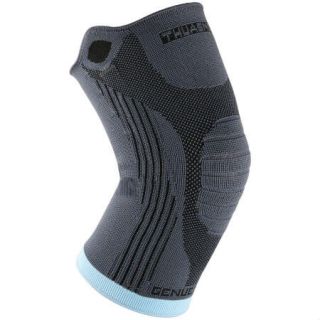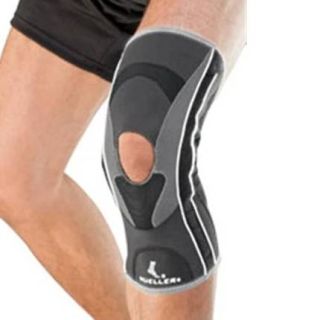Crucial Role of Knee Braces and Supports in Cycling:
Cycling, a popular and exhilarating physical activity, offers numerous health benefits, including cardiovascular fitness, muscle strength, and stress reduction. However, like any physical activity, cycling comes with its set of challenges, and one common concern for cyclists is knee health. In recent years, the use of knee braces and supports in cycling has gained prominence, addressing and preventing issues related to knee discomfort and injuries. This essay aims to explore the importance of knee braces and supports in the context of cycling, delving into their benefits, types, and considerations for cyclists.
Understanding the Anatomy of the Knee:
To comprehend the significance of knee braces and supports in cycling, it's essential to first understand the intricate anatomy of the knee joint. The knee is a complex hinge joint connecting the thigh bone (femur) to the shinbone (tibia) and the kneecap (patella). This joint is pivotal in the pedaling motion during cycling, making it susceptible to stress, strain, and injuries. The ligaments, tendons, and cartilage within the knee are crucial components that must function harmoniously for optimal cycling performance.
The Role of Knee Braces in Cycling:
1. Injury Prevention:
One of the primary reasons cyclists turn to knee braces is for injury prevention. The repetitive nature of cycling can lead to overuse injuries, particularly in the knee. Knee braces provide external support, helping stabilize the joint and reduce the risk of injuries such as patellar tendonitis, patellofemoral pain syndrome, IT band syndrome, and ligament strains.
2. Stabilization and Alignment:
Proper knee alignment is essential for efficient pedaling and preventing undue stress on the joint. Knee braces aid in stabilizing the knee, ensuring that it maintains the correct alignment throughout the cycling motion. This not only enhances performance but also reduces the likelihood of developing chronic issues over time.
3. Post-Injury Support:
For cyclists recovering from knee injuries, a knee brace becomes a crucial tool in the rehabilitation process. Whether it's a sprain, strain, or post-surgery knee pain relief, a well-designed knee brace provides the necessary support to quicken recovery time and prevent further damage during the recovery phase.
Knee Supports for Cycling:
1. Compression Sleeves:
Compression knee sleeves are a popular form of knee support for cyclists. These knee sleeve products provide compression around the knee, improving blood circulation and reducing swelling. Cyclists often use compression sleeves to manage conditions like runner's knee or to alleviate general fatigue during extended rides.
2. Hinged Knee Braces:
Hinged knee braces offer a higher level of support by incorporating hinges that mimic the natural knee joint movement. These braces are beneficial for cyclists with a history of ligament injuries or those seeking additional stability during intense rides. Hinged knee braces strike a balance between support and flexibility.
3. Neoprene Knee Supports:
Neoprene knee supports are known for their flexibility and heat retention properties. Cyclists favor these supports for their ability to provide mild compression, warmth to help improve blood flow, and proprioceptive feedback. Neoprene knee supports are particularly useful in preventing minor injuries and supporting the joint during low to moderate-intensity rides.
Considerations for Cyclists:
1. Proper Sizing and Fit:
Selecting the right size and ensuring a proper fit are critical when choosing knee braces or supports. Ill-fitting braces may not provide the desired support and can even cause discomfort or restrict movement. Cyclists should carefully measure their knee circumference and follow manufacturer guidelines for sizing.
2. Breathability and Moisture Management:
Cycling often involves prolonged periods of physical activity, leading to increased perspiration. Choosing knee braces or supports with breathable materials and effective moisture-wicking properties is crucial to prevent discomfort and skin irritations during rides.
3. Individualized Needs:
Every cyclist is unique, and individual factors such as riding style, terrain, and existing knee conditions influence the choice of knee braces or supports. Seeking advice from healthcare professionals or experienced cyclists can help with choosing the best knee brace based on individual needs.
In conclusion, knee braces and supports play a pivotal role in promoting knee health and enhancing the overall cycling experience. From injury prevention to post-injury recovery, these tools offer cyclists a proactive approach to maintaining optimal knee function. Understanding the anatomy of the knee, the role of braces, and the variety of supports available empowers cyclists to make informed decisions for their specific needs. As cycling continues to grow in popularity, the importance of knee braces and supports should not be overlooked, contributing to a safer, more enjoyable cycling experience for enthusiasts of all levels.
 Details$48.99 $39.99
Details$48.99 $39.99 Details$63.99 $50.29
Details$63.99 $50.29 Details$63.99 $62.99
Details$63.99 $62.99 Details$153.99 $141.99
Details$153.99 $141.99 Details$85.52 $74.99
Details$85.52 $74.99
 Details$89.99 $78.99
Details$89.99 $78.99 Details$79.99 $72.99
Details$79.99 $72.99 Details$57.99 $46.99
Details$57.99 $46.99
 Details$74.99 $65.99
Details$74.99 $65.99

